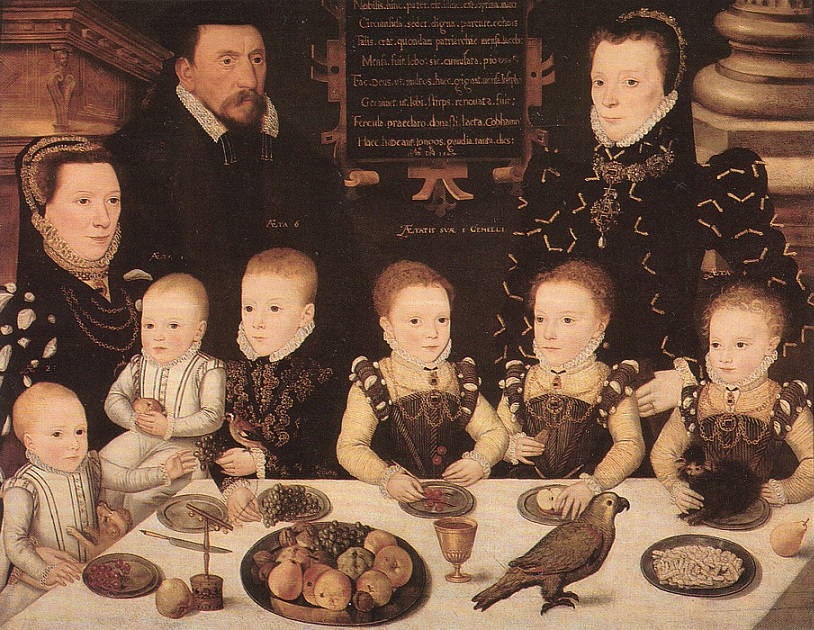
Marriage

Introduction
SHE was 14 years old, the daughter of the great lawyer, Sir Edward Coke. She was beautiful and strong-willed.
Her name was Frances Coke.
HE was not the perfect bridegroom. He was 26. Every now and then he fell into depression and cut himself with broken glass.
His name was John Villiers.
Frances's father wanted Villiers to marry his daughter. Villiers was the brother of the powerful Duke of Buckingham, King James's favourite. Edward Coke hoped the marriage would make the king like him. He offered Villiers a dowry (marriage payment) of £10,000 and £1,000 a year.
Frances's mother, Lady Hatton, did not want the marriage to take place. She wanted Frances to marry the Earl of Oxford. To help things along, Lady Hatton forged love letters from the Earl. Then she forced Frances to promise to marry him.
Edward Coke forged a search warrant and went to get Frances. His men broke down the door, found her hiding in a cupboard and dragged her from the house. Lady Hatton went to court, got a warrant, and took her daughter back at gunpoint.
Then King James became involved. He decided that Frances had to marry John Villiers. Frances was equally determined that she would not!
James tried to force her to do as he wanted. First, he sent the Earl of Oxford away, then he imprisoned Lady Hatton. Finally, Frances was 'tied to the bedposts and whipped'.
In the end, Frances agreed to marry John Villiers. She wrote to her mother:
I am a child and I don't understand what is good for me. Sir John Villiers is a gentleman and I do not dislike him.
Dear mother, believe me, there have been no violent means used to me in word or deed.
The wedding (on 29 September 1617) was magnificent, but – as might be expected – the marriage was a disaster. After a time, John Villiers went completely mad. His land was given to his family.
Then Frances became pregnant. The baby's father was a young man at court called Sir Robert Howard. King James arrested Frances. She escaped to France and lived there with Robert Howard for the rest of her life, happy but poor.
After you have studied this webpage, answer the question sheet by clicking on the 'Time to Work' icon at the top of the page.
Links:
The following websites will help you research further:
Early Modern Marriage:
• Early Modern marriage
• Love and marriage during the Tudor era
![]()
1 A Virtuous Woman
A letter written in 1649 by Lord Shaftesbury after the death of his wife.
My wife had a fit, just as she was sitting down after supper. At first she recovered, and spoke and kissed me, and complained only of a headache; but she fell down again in a quarter of an hour, and never spoke again.
She was a lovely, beautiful, fair woman, a good Christian, funny and wise, yet the most sweet, affectionate and faithful wife in the world. She did well at anything she tried – housewifery, needlework, cookery. She was free from any pride, and full of good advice.
2 Good Fortune
From a seventeenth-century joke book.
A man met a friend he had not seen for a long time. His friend asked him how he was. He said he was very well, and had married since they last met.
'That's good,' said his friend.
'Not so good,' said he, 'for I have married a shrew.'
'That's bad,' said his friend.
'Not so bad,' said the man, 'for I got a dowry of £2,000 with her.'
'That's good,' replied his friend.
'Not so good,' he said, 'for I bought a house, and it burned down.'
'That's very bad,' his friend said.
'Not so bad,' said he, 'for my wife was burned in it.'
3 An Elizabethan Family
A memorial painting of William Brooke, Lord Cobham, and his family in 1567.
Francis Newton, Lady Cobham (seated, left) was his second wife – the marriage to his first wife had been unhappy, and he had separated from her until she died, whereupon he had married Frances in 1560. The other lady in the picture is his sister.
Lord Cobham was a Privy Councillor and diplomat; she was one of Queen Elizabeth's Ladies of the Bedchamber. He was continually on missions; she preferred to stay at Court, going to Cobham Hall only to have her children (four sons and three daughters).
The Dictionary of National Biography describes the marriage as 'fortuitous for both, as her personal influence with the queen proved useful to Cobham'. They had money and many children – but did they love each other?

Introduction - continued
All the sources above refer to wealthy people.
For poor people, marriage was much simpler – they gave each other a ring (sometimes made of woven straw) and exchanged vows at the church gate. They rarely paid dowries; marriage for love was more common.
Like many Tudor activities, marriage was surrounded by superstition and folk-lore.
Chanting 'Tinker, tailor, soldier, sailor, rich man, poor man, beggarman, thief' – while counting the fruit stones round the edge of your plate – was a way of divining the occupation of a future husband. In the same way the counting rhyme 'This year, next year, sometime, never' set the wedding date; 'silk, satin, muslin, rags' determined the wedding dress, and 'big house, little house, pigsty, barn' the place where you would end up living.
Similarly, an old superstition told girls whether their young man would become their husband: they took the name of the young man, then their own name, crossed off the shared letters, and counted out the others to the chant: 'Love, marry, hate, adore.'
Alternatively, St Agnes' Eve (20 January), Hallowe'en (31 October) and St Thomas' Eve (20 December) were all times when they hoped to see a vision of the man they would marry.